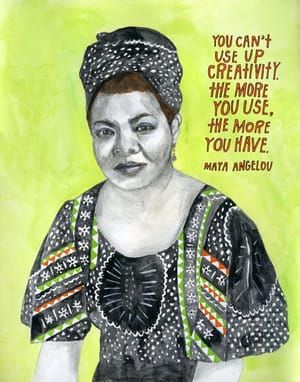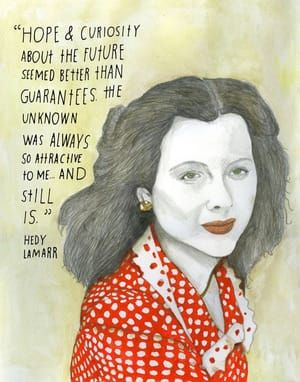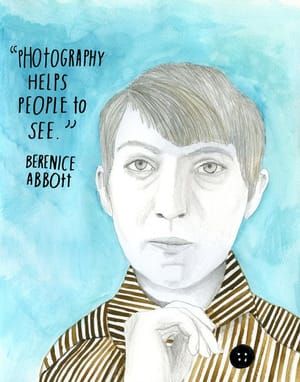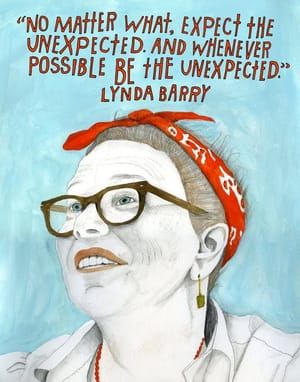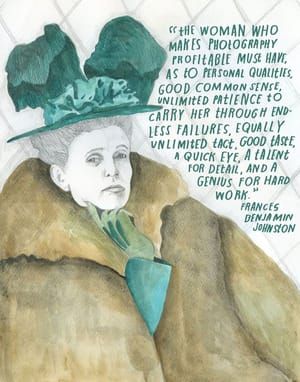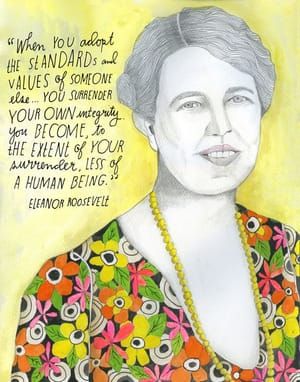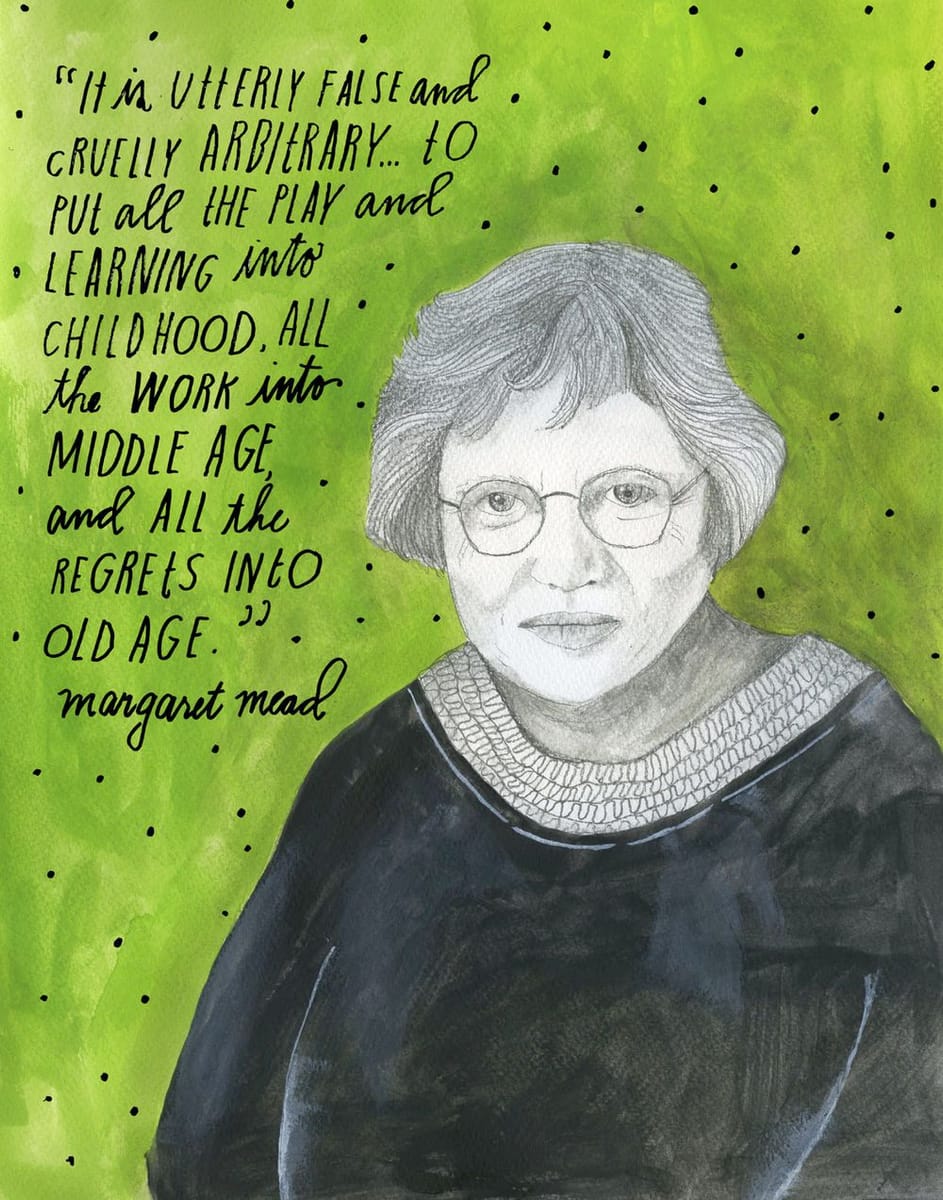

Margaret Mead, 2013
Lisa Congdon
Margaret Mead (December 16, 1901–November 15, 1978) intended to make a life out of painting. Instead, she became the world’s best-known cultural anthropologist, becoming the discipline’s most revered patron saint.
A 1959 audio interview captured Mead’s deceptively ordinary extraordinariness:
Doctor Mead is of small build, she has blue eyes, she’s plain folks – there are no wares about her. You get the impression that she’d be at home anywhere – in an igloo, a native hut, or a Park Avenue penthouse.
And, indeed, she did. Mead dedicated her life to the study of indigenous societies and the translation of those observations into invaluable insights on Western culture. Through her tireless work and its eloquent articulation in her books – including her now-legendary volumes Sex and Temperament and Coming of Age in Samoa: A Psychological Study of Primitive Youth for Western Civilization – as well as in her mass media appearances, she popularized modern anthropology, giving it shape and cultural credibility both as a field of practical study and as an area of intellectual inquiry.
Mead is credited as the originator of the viral aphorism “Never doubt that a small group of thoughtful, committed citizens can change the world. Indeed, it’s the only thing that ever has.” Though the authorship of the now-ubiquitous quote has never been ascertained, it endures as a beautiful and fitting meta-testament to Mead’s studies of how ideas spread and are assimilated in a culture.
Mead opposed the over-academization of anthropology and its preoccupation with terminology rather than crisp, plain insight. She wryly admonished in her 1979 volume Some Personal Views:
If one cannot state a matter clearly enough so that even an intelligent twelve-year-old can understand it, one should remain within the cloistered walls of the university and laboratory until one gets a better grasp of one’s subject matter.
Both her anthropological observations and her personal experience led Mead to defy a number of Wester conventions, instilling in her the conviction that one’s sexual orientation can evolve over the course of a lifetime and that it is possible for a person to have more than one beloved at the same time. In a collection of Mead’s letters, published in 2006 with her daughter’s permission, she writes:
[I believe] that one can love several people and that demonstrative affection has its place in different types of relationship.
Mead also objected to the limiting social structures and labels of Western society, especially those that confined sexual identity and behavior to artificial categories, including those of “heterosexual” and “homosexual.” Mead herself had three marriages to men – all anthropologists – and a daughter with her third husband, the renowned British anthropologist Gregory Bateson. She also had two long-term romantic relationships with women: One with her mentor Ruth Benedict, fourteen years her senior, who died in 1948, and another with the prominent anthropologist Rhoda Metraux, thirteen years her junior, who edited much of Mead’s work and with whom Mead spent the last 23 years of her life.
Several weeks after her death, in January of 1979, Mead was posthumously awarded the prestigious Presidential Medal of Freedom, which cited her far-reaching and inextinguishable legacy:
Margaret Mead was both a student of civilization and an exemplar of it. To a public of millions, she brought the central insight of cultural anthropology: that varying cultural patterns express an underlying human unity. She mastered her discipline, but she also transcended it. Intrepid, independent, plain spoken, fearless, she remains a model for the young and a teacher from whom all may learn.
[http://thereconstructionists.org/page/3]
What do Buddhist artist Agnes Martin, Hollywood inventor Hedy Lamarr, and French-Cuban author Anaïs Nin have in common? Their names may not conjure popular recognition, and yet, for Lisa Congdon and Maria Popova, these women represent a particular breed of cultural trailblazer: female, under-appreciated, badass. They are “Reconstructionists,” as the writer-illustrator duo call them – and for the next year, they’ll be celebrated on a blog of the same name. Every Monday for 12 months, The Reconstructionists will debut a hand-painted illustration and short essay highlighting a woman from fields such as art, science, and literature. The subject needn’t be famous, but she will, as Popova, the creator of Brain Pickings, puts it, “have changed the way we define ourselves as a culture." We spoke with Popova, and illustrator Congdon, about the inspiration....
[http://storyboard.tumblr.com/post/41698890843/the-reconstructionists-celebrating-badass-women]
Uploaded on Jan 23, 2018 by Suzan Hamer
Lisa Congdon
artistArthur
Wait what?

